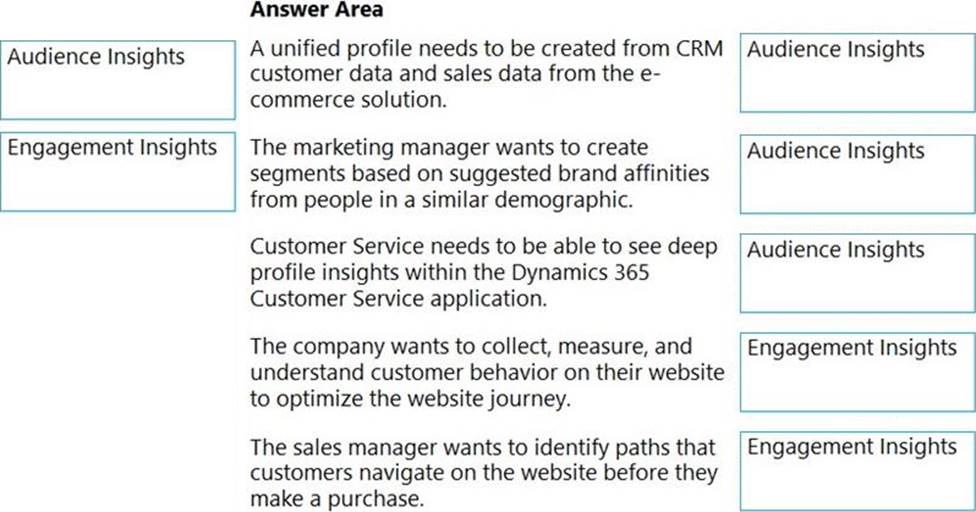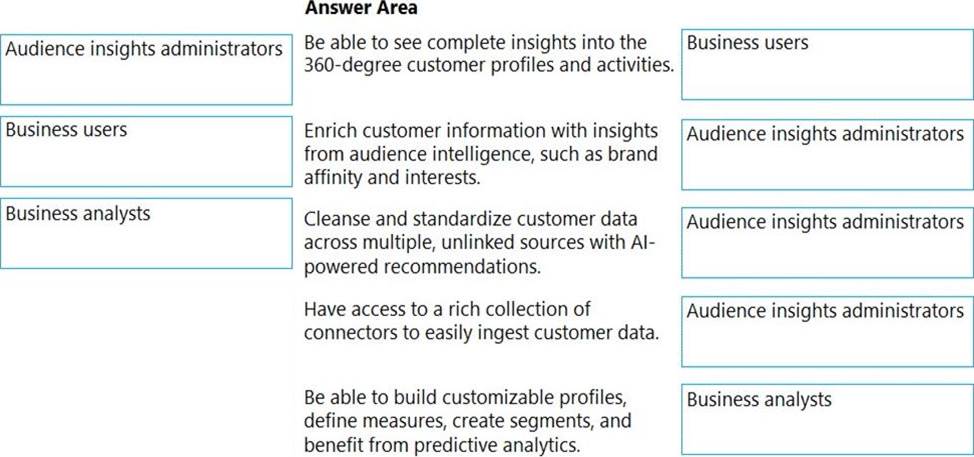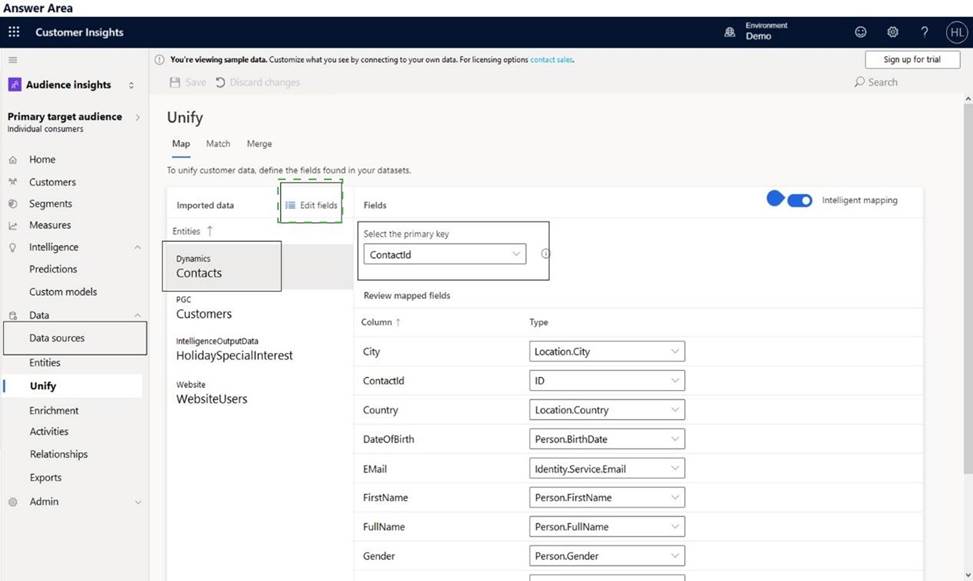Microsoft MB-260 Microsoft Customer Data Platform Specialist Online Training
Microsoft MB-260 Online Training
The questions for MB-260 were last updated at Oct 28,2025.
- Exam Code: MB-260
- Exam Name: Microsoft Customer Data Platform Specialist
- Certification Provider: Microsoft
- Latest update: Oct 28,2025
DRAG DROP
You are a Customer Data Platform Specialist. The chief marketing officer (CMO) asked you to look at different use cases as you are implementing the Customer Insights platform.
Which use case is applicable to either audience insights or engagement insights? To answer, drag the appropriate capability to the correct use case. Each capability may be used once, more than once, or not at all. You may need to drag the split bar between panes or scroll to view content. NOTE: Each correct selection is worth one point.
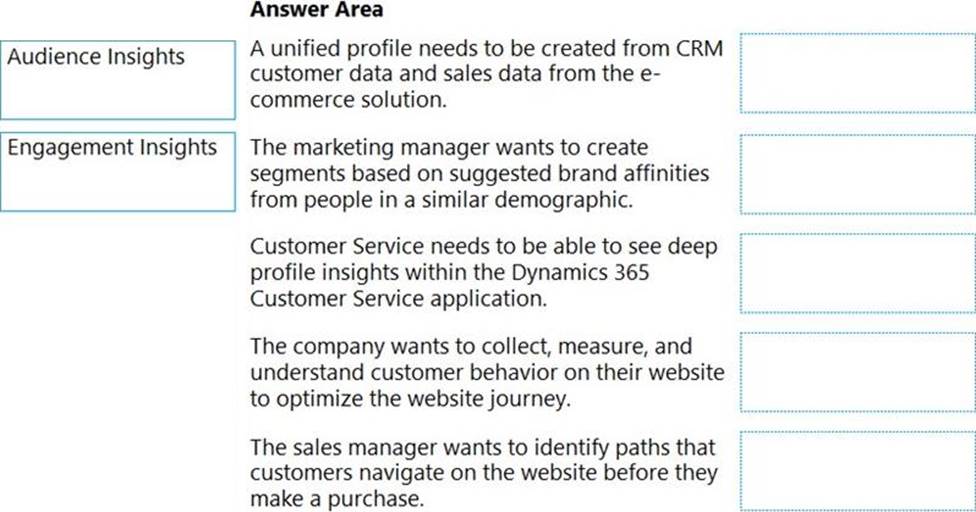
DRAG DROP
You are a Customer Data Platform Specialist. You are in the process of implementing audience insights as the Customer Data Platform (CDP) solution for your company.
Your manager asks you to give a short presentation for new users who will be using audience insights and explain some of the benefits that audience insights will offer them.
Which user group will take which benefit from audience insights? To answer, drag the appropriate user group to the correct benefit. Each user group may be used once, more than once, or not at all. You may need to drag the split bar between panes or scroll to view content. NOTE: Each correct selection is worth one point.
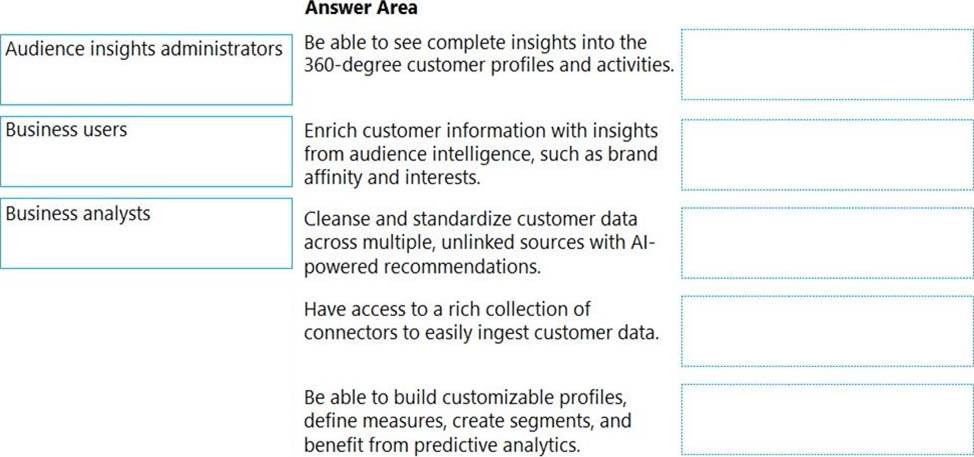
HOTSPOT
You are a Customer Data Platform Specialist. Your company has audience insights set up as their Customer Data Platform (CDP). The product owner entered a user story on your backlog to add data from the new loyalty solution into the CDP. You defined the data source. You are ready to add the loyalty contacts to the data unification process.
Which new data entity area should you select in the Map phase of the data unification process?
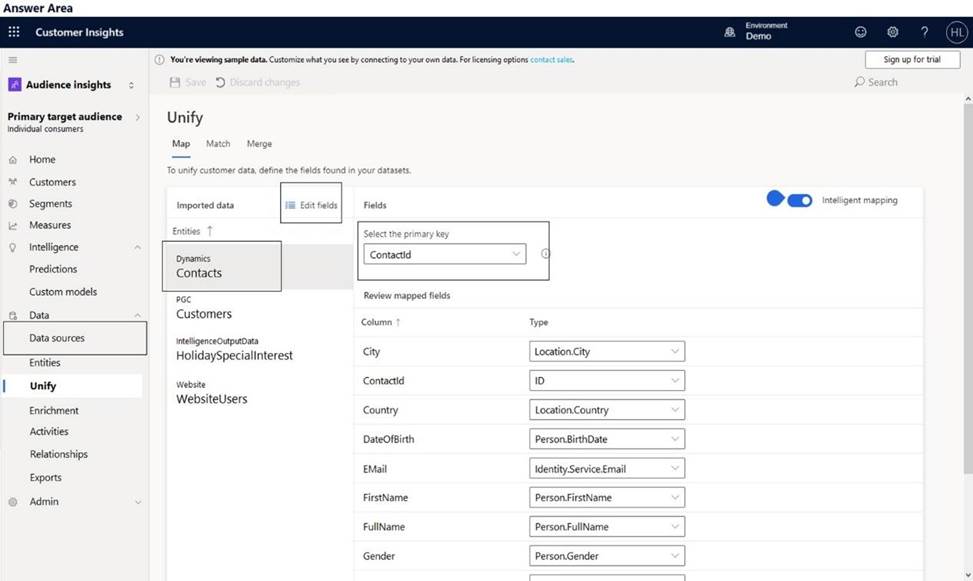
You are a Customer Data Platform Specialist. You completed all the steps in the match phase of the data unification process in the audience insights. You need to review and validate your match results.
Which three metrics are available for you to validate the results? Each correct answer presents a complete solution. NOTE: Each correct selection is worth one point.
- A . Unique matched records
- B . Matched records only
- C . Matched and non-matched records
- D . Unique source records
- E . All source records
You are a Customer Data Platform Specialist. You are in the process of implementing audience insights at a bank.
You finished setting up the different initial data sources. You are starting the unification process.
Which three tasks do you need to perform in the Mapping phase of the unification process? Each correct answer presents part of the solution. NOTE: Each correct selection is worth one point.
- A . Identify the primary keys and semantic field types within the different entities.
- B . Identify the entities that you need to unify into a single profile.
- C . Identify the prioritization of similar fields between different entities.
- D . Select the fields you want to include the unified customer profile.
- E . Identify rules for duplication between different entities.
You are a Customer Data Platform Specialist. Your marketing team is in the process of mapping entities and attributes in the data unification process of audience insights. You are assisting them with completing this task.
Which two statements correctly describe how audience insights handles the mapping of semantic types for entity attributes? Each correct answer presents part of the solution. NOTE: Each correct selection is worth one point.
- A . Attributes that are automatically mapped to a semantic type cannot be remapped to a custom semantic type.
- B . Attributes must be mapped to the semantic type of ID in order to be used as a primary key for the entity.
- C . The ‘Define the data in the unmapped fields’ section shows attributes that are not automatically mapped to a semantic type.
- D . The ‘Review mapped fields’ section shows all attributes for which a semantic type is automatically identified.
You are a Customer Data Platform Specialist. Your organization is using Power Query when connecting to Data Sources in audience insights. You need to load eCommerce Contacts to audience insights.
Which statement about loading data to audience insights using Power Query is correct?
- A . You must create a separate Power Query data source for each entity you wish to ingest.
- B . Power Query automatically recognizes header rows in files when you use the Text/CSV connector.
- C . After you save a Power Query data source, you have to manually trigger the initial refresh process.
- D . You can add additional entities to the data source using Get Data functionality in the Power Query.
Latest MB-260 Dumps Valid Version with 50 Q&As
Latest And Valid Q&A | Instant Download | Once Fail, Full Refund

